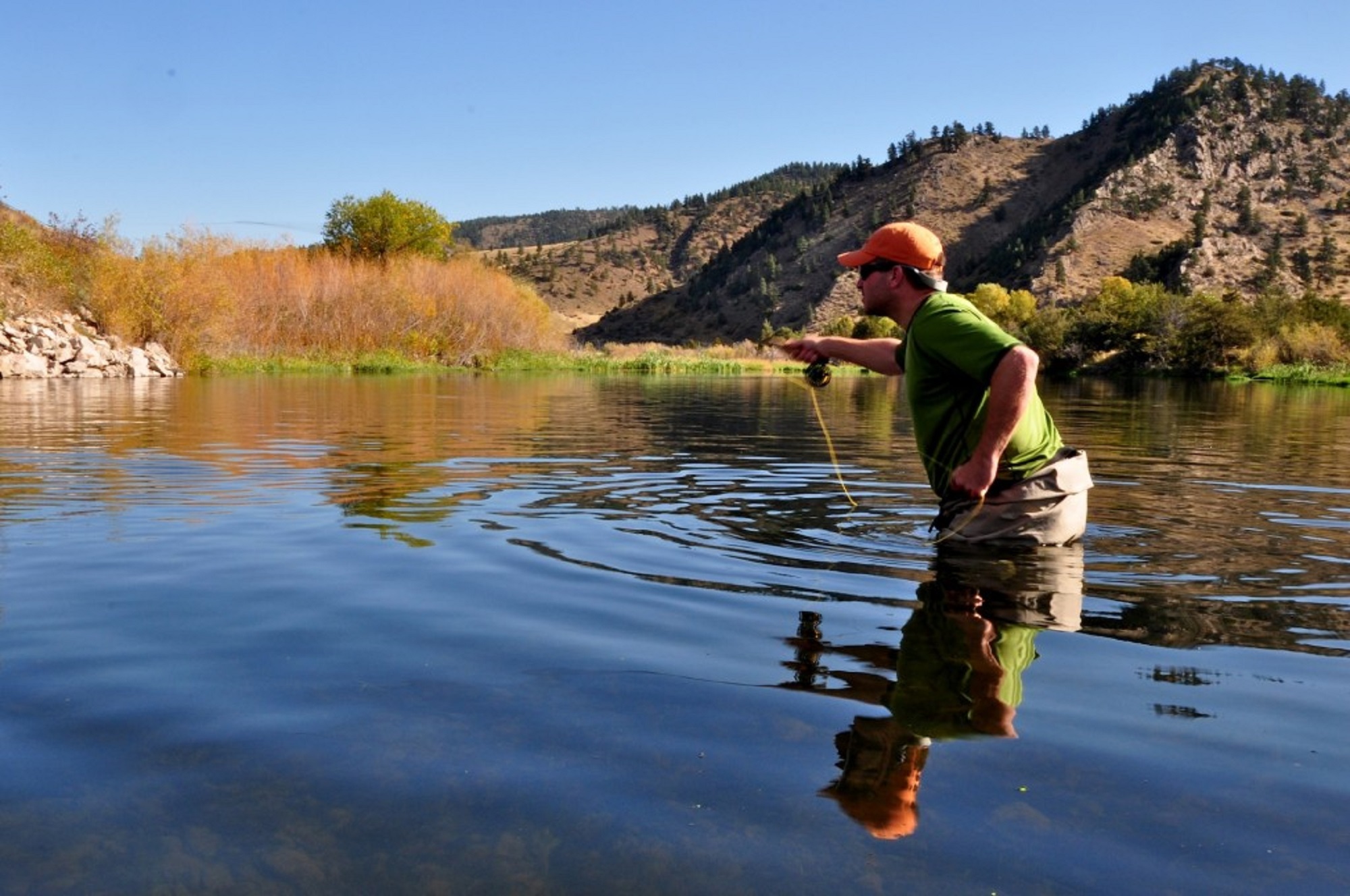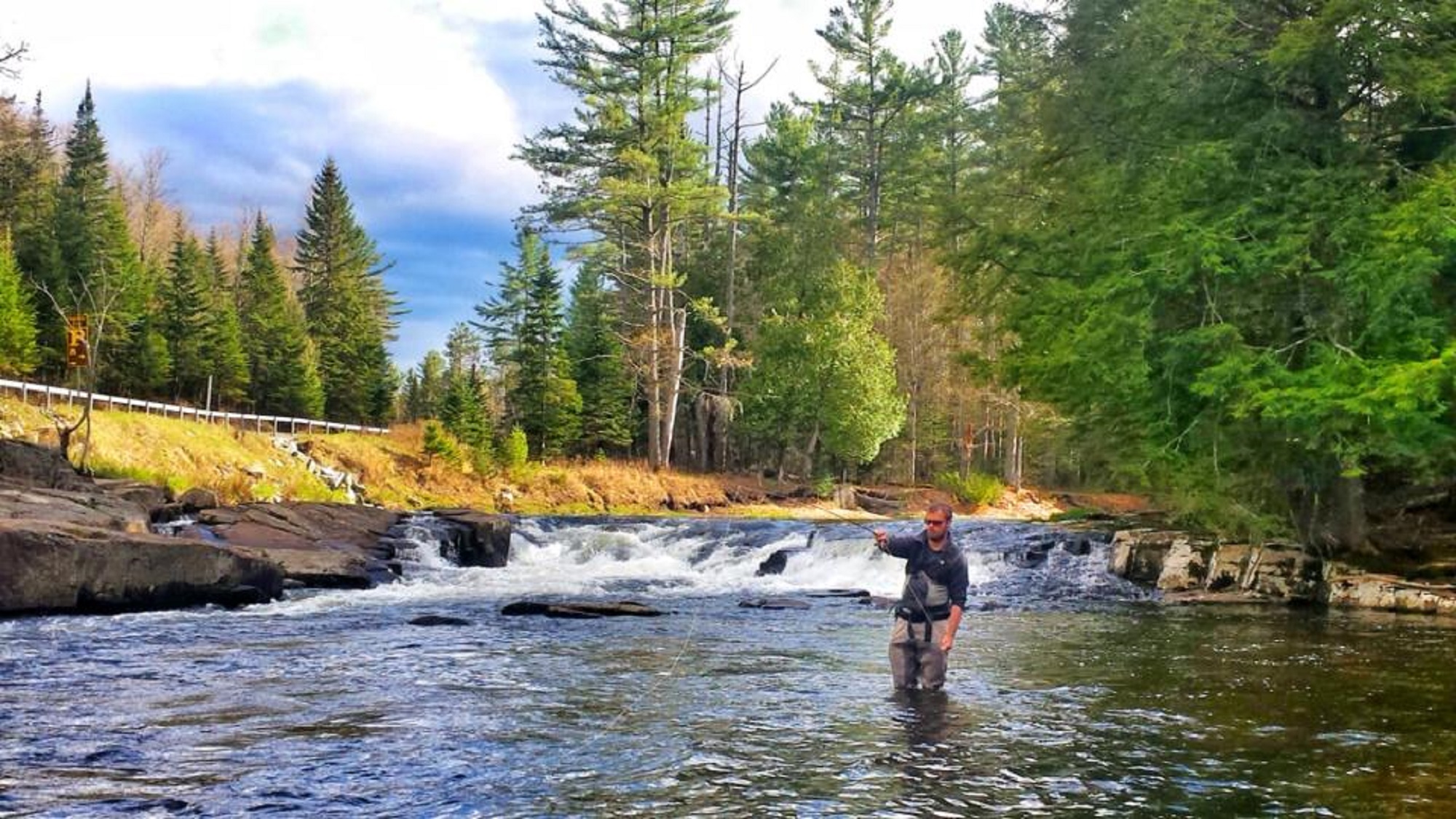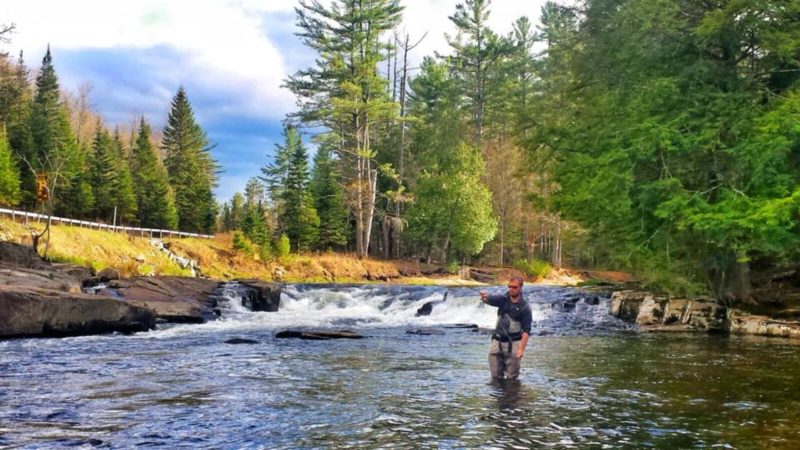If you haven’t yet experienced the enjoyment of dry fly fishing, fall can be a good time to get out and try it. Some feel that catching trout on a dry fly is the epitome of fly fishing. We can’t argue that it’s about as much fun as you can have on a trout stream because everything is visual. Learn how to fly fish for trout with dry flies including avoiding drag, when to fish emergers, what to do when a rising fish does not take your fly, and when to add movement to your dry fly. As an added bonus, most streams are much less crowded during this time of year.

Once you watch a trout take your fly on the surface for the very first time, you’ll understand why fly anglers often favor dry fly techniques. You can learn how to fish dry flies with a bit of practice and a few simple tips.
- Observe the insects that float past you to match the hatch. Take a few extra minutes to identify the insects in the trees or in the air, or try to catch a few. When surveying the flies in your box, select one that most closely resembles the insects you see around the stream.
- Learn dry fly fishing techniques (also referred to as surface techniques) like the reach cast and the parachute cast.
- Learn which situations call for longer leaders. For example, when fishing dry flies on flat, clear, or low rivers and streams. In instances like these, you may need as much as 15-feet of leader. For example, a dry fly fishing set up for trout might consist of a 4-weight rod, floating fly line, and 12 to 15-foot leader when the water is calm and clear.
- One of the most important dry fly fishing tips is to remember to take a second to inspect your fly after each cast. Check to see if the wings or appendages on your fly have rotated out of position or if any of the materials are damaged. You might be surprised at how often this can happen, and it can definitely make the difference between a take and an ignored fly.
- Use floatant to keep your flies from absorbing water. Floatant comes in a few different forms (paste, liquid, gel), but they all work best when applied to a fly that is completely dry.
- Remember that a drag-free drift is one of the keys to success when dry fly fishing. Try to land your fly several feet ahead of the fish, and the let it drift toward the fish. You don’t want to spook the fish with a smack of the fly directly on it’s head. Land upstream of the fish and, as you mend your line, your fly will have a natural presentation as it floats its way down.
- When learning how to fish dry flies, take time to refresh your knowledge of insect movement. By doing so, you’ll know when to apply a dead (motionless drift) and when to give your line an occasional tiny tug for subtle action.
- Note how the trout responds to your fly. If he sticks up his nose and sucks it in, lift your rod, set the hook, and bring the fish in. If the trout refuses a fly that floats directly over him without any drag, it’s likely time to change flies or change your fly fishing tactics.

Now that you have a few tips to apply when dry fly fishing, find a few local streams and grab your fly box. The trout are waiting!







